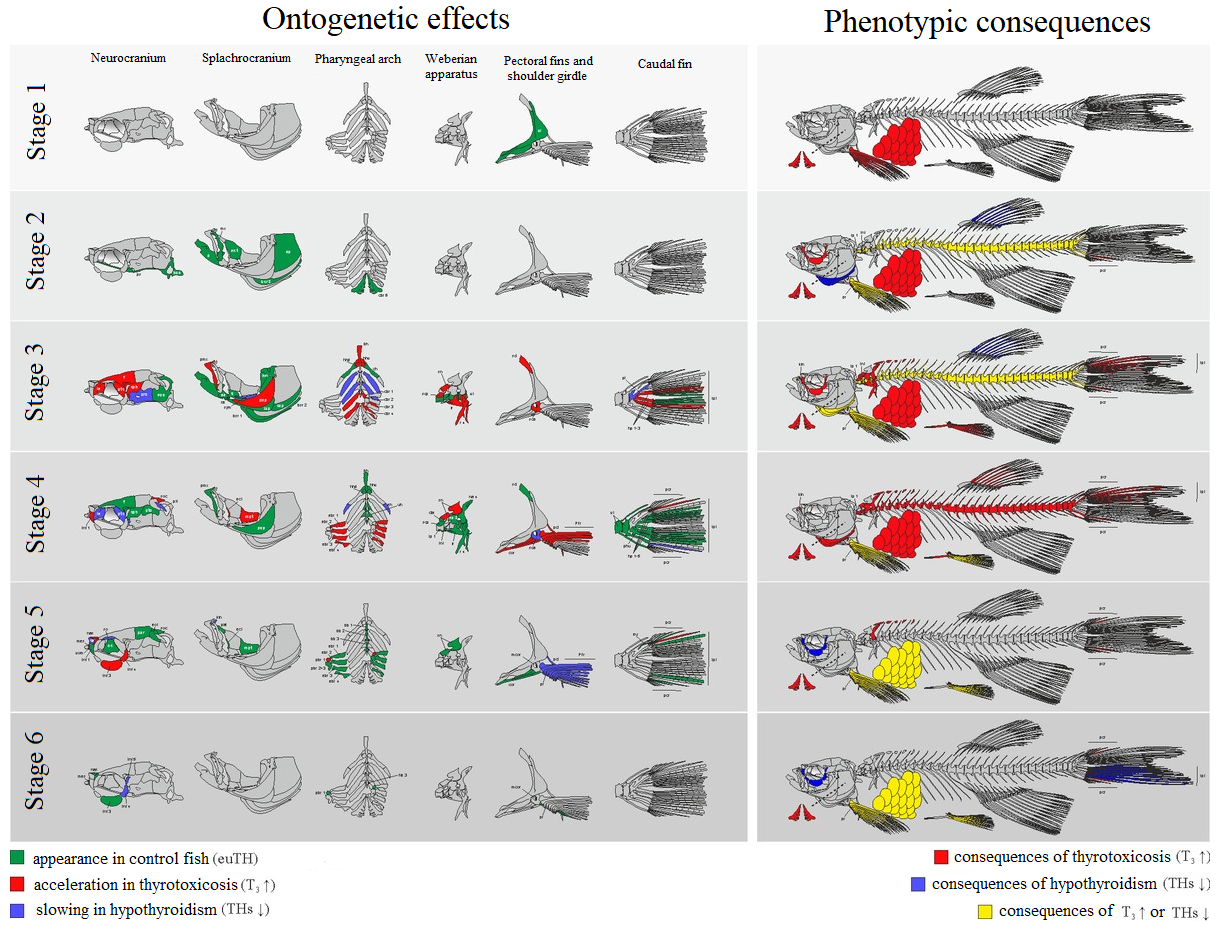
The role of the hypothalamic-pituitary-thyroid axis (HPTA) in the individual development and life of vertebrates is difficult to overestimate. The end product of this neurohumoral cascade are thyroid hormones (TH), which, by binding to specific transcription factors (TH receptors), affect the expression of target genes, i.e. are signals by which the nervous system regulates the activity of the nuclear and non-nuclear genome of various cells. The pleiotropic action of TH makes it possible to maintain homeostasis of the body, as well as adaptively adjust its metabolism and ontogenesis in accordance with changes in external and internal environmental factors. Any, even minor deviations from the normal activity of this endocrine axis can lead to serious phenotypic consequences, which in most cases are negative (pathological) and reduce the adaptability of the organism, but sometimes become evolutionarily significant and ensure its rapid adaptation to new living conditions. These qualities make the HPTA one of the most interesting endocrine cascades from the point of view of both medicine and modern evolutionary developmental biology (EvoDevo).
However, most experimental studies of the role of HPTA in development, vital activity and evolution are carried out on organisms for which altered thyroid status: hyper- or hypothyroidism is a constant characteristic. In such experiments, ontogenetic and phenotypic consequences are cumulative, which greatly limits knowledge of the processes regulated by TG. In this regard, we conducted a series of experimental studies on the ontogenetic and phenotypic consequences of short-term thyrotoxicosis and hypothyroidism at different stages of early ontogenesis of the model carp species Danio rerio. The main attention during the experiments was paid to the development and morphology of the fish skeletal system (Fig. 1).

The main result of the work was the discovery of a critical ontogenetic window - the stage of fish development that is most sensitive to changes in the thyroid status. It was shown that fluctuations in the TH level during this relatively short period lead to coordinated ontogenetic changes and phenotypic consequences comparable to those in fish with constant hyper- and hypothyroidism (Fig. 2). It is noteworthy that the discovered ontogenetic window coincides with the developmental stage at which heterochronies arise, leading to the formation of ecological and morphological diversity during the adaptive radiation of carp fish.
The results are published in: Borisov, V., & Shkil, F. (2024). Effects and phenotypic consequences of transient thyrotoxicosis and hypothyroidism at different stages of zebrafish Danio rerio (Teleostei; Cyprinidae) skeleton development. The Anatomical Record, 1–25.
